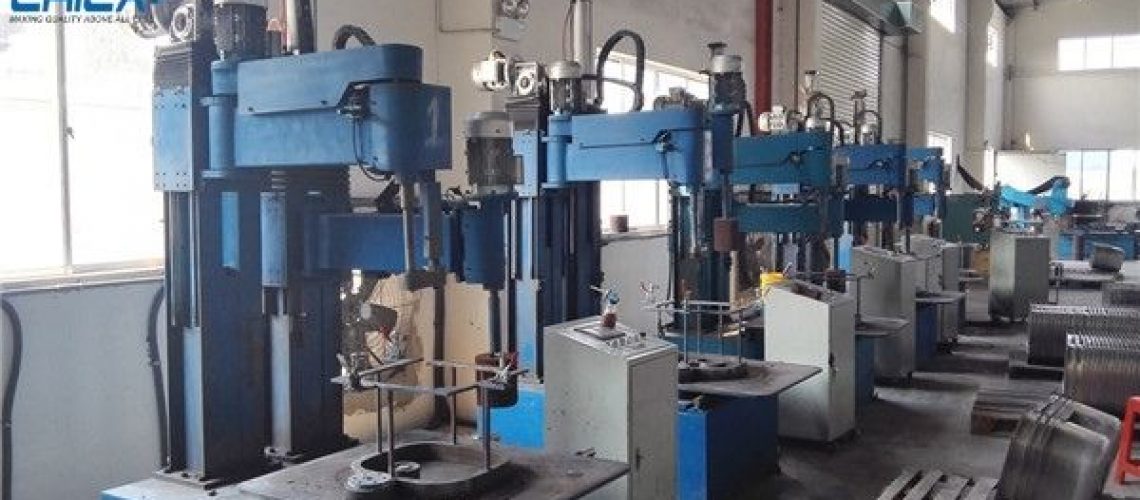İşletmelerin lavabo satın almadan önce düşündüğü birçok seçenek var. Bu işletmeler doğrudan müşterilerle etkileşime giriyor. Bu nedenle, piyasa ihtiyaçlarının daha fazla farkındalar ve bunları yerine getirmek istiyorlar.
Pazar ihtiyaçlarını karşılamanın bir yolu, müşterilere birçok seçenek sunmaktır. İş burada satış yapmayı planladıkları farklı lavaboların yapımına bakacak. Bu lavabolardan biri paslanmaz çelik lavabolardır.
Paslanmaz çelik evyeler çok dayanıklı. Bu yüzden ev sahipleri onları diğer lavabo türlerine göre tercih ediyorlar. İşletmeler de onları diğer lavabolara tercih ediyorlar çünkü satmak daha kolay.
Paslanmaz çelik lavabolar iki tiptir: Biri çizilmiş paslanmaz çelik lavabo ve diğeri el yapımı paslanmaz çelik lavabo. Her ikisinin de faydaları ve dezavantajları var, bu yüzden hedeflediğiniz pazara göre seçiminizi dikkatlice yapın.
Çizilmiş paslanmaz çelik lavabo üretmek
Bu makalede, çizilmiş paslanmaz çelik lavabonun üretim sürecine odaklanıyoruz.
İşlenmemiş içerikler
Eh, ilk adımüretim süreci hammaddeleri seçiyor.
Bir lavaboda kullanılan çelik genellikle 0.8 mm ila 1.5 mm arasında ölçülür. Genellikle, bir fabrika herkesin ihtiyaçlarını karşılamak için farklı uzunluklar ve genişlikler satın alır.
Daha sonra paslanmaz çeliği bir rulo şeklinde bir atölyeye taşırsınız.
Malzeme laminasyonu
Sonra laminasyon işlemi gelir. Germe sırasında malzemeye potansiyel olarak zarar verebilirsiniz. Bu hasarı önlemek için, üretici işlemin başlangıcında çelik plakayı kaplar.
Bununla birlikte, çelik tabakanın sadece bir tarafını kaptırırsınız, çünkü diğerinin germe işleminde kalıpla yüzleşmesi gerekecektir.
Malzemeyi Kesmek
Bundan sonra kesme işlemi var.
Üretici uzun çelik plakayı farklı boyutlara keser. Çelik sayfasını birsilindir sıkıştırma Koruyucu film ile birlikte bölge. Bu, kaplama işlemini de tamamlar.
Bundan sonra, işçi çelik sacını bir giyotin bıçağından geçirir. Bu, gerekli uygun boyutlara keser.
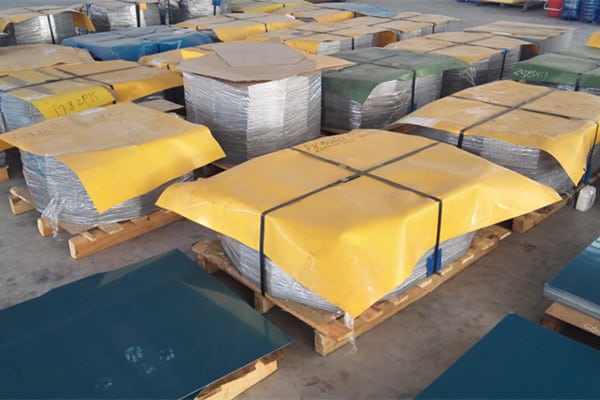
Malzemenin açı kesimi
Bundan sonra malzeme açılı kesim işlemi gelir. Bu, levhanın lavabonun görünümüne uyacak şekilde kalıplanmasını içerir.
Yağ Uygulamak
Daha sonra streç yağı çarşafın her iki tarafına eşit miktarda sürüyorsunuz. Bu, gerilme çatlaması olasılığını azaltmaya yardımcı olur ve çeliğin ömrünü uzatır.
İlk Çizim
Bundan sonra üretici çeliği bir pres tablasına yerleştirir. Ürün kalıbını tezgah plakalarının üst ve alt delikleri arasına yerleştirirseniz daha iyi olur.
Daha sonra motoru açmalısınız. Bu, üst plakayı düşürür hidrolik pres, bu da tüm masayı aşağıya doğru iter.
Bu işlem sırasında yatay konum aynı kalır. Bu nedenle çelik levhanın form esnemesini tamamlamak için yukarıya doğru gitmekten başka seçeneği yoktur.
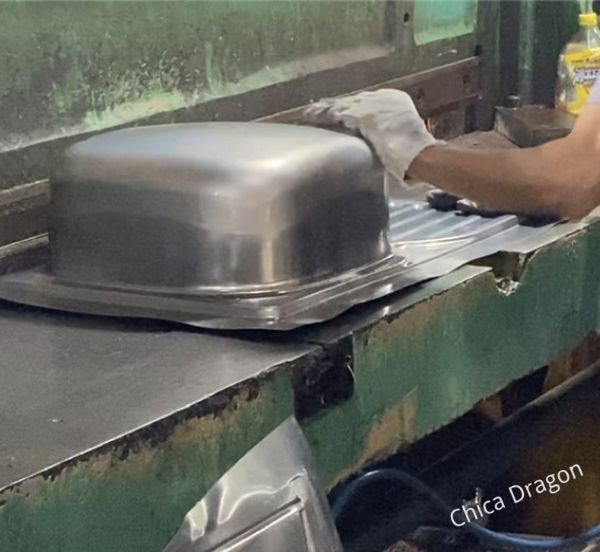
Temizlik
Üretici şimdi bu lavaboyu kaplamanın kaldırılması için bir temizleme alanına gönderecek. Ayrıca kalan çekme yağı da yıkanır. Bu, çelik sacı tavlama işlemine hazırlar.
Tavlama
butavlama Süreç derinlik gereksinimlerini karşılamak için vardır. Bazı üreticiler ayrıca ikincil bir çizimi de tercih eder.
Su kabının derinliği 160mm civarında ise tek çizim ile bunu başarabilirsiniz. Ancak derinlik yaklaşık 180 mm'ye ulaşırsa ikinci bir çizime ihtiyacınız vardır. Bunun nedeni paslanmaz çelik sacın çatlama olasılığının daha yüksek olmasıdır.
This is where annealing comes in handy. Annealing restores the activity of damaged stainless steel plates. You can either use a line or a furnace for this process.
Annealing Line
The annealing line is a 20 meters long high-temperature line, usually around 1100 degrees. On the line, there are two entrances and two exits.
A cable car or a conveyor belt transports the sink through the annealing line. You can anneal around 25 sinks at the same time.
Also, stainless steel generates some magnetic properties due to the stretching. To eliminate these, you can use degaussing.
Some people also use a furnace for the annealing process instead of a line.
Second Drawing
After that, the manufacturer passes the sink through a hydraulic press. This second drawing needs to be more accurate and fully drawn to the depth of the design.
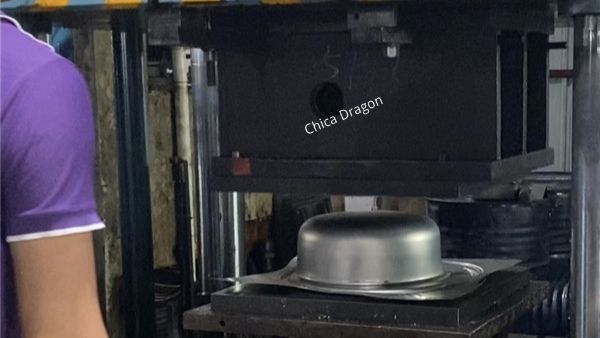
Cutting The Edges
Then it would be best if you trimmed the edges of the sink according to the product design. Keep in mind to reserve the installation position of the sink as well.
The Punching Process
Then comes the punching process. The manufacturer punches overflow and drains holes on the punches. You do this on each section of the plate. The punching equipment may not be in optimal condition and may not punch all the plates if you do them together.
Whether it is a single bowl sink or a double bowl sink, it is formed at one time by the punching machine.
Ignore the next steps if you choose a double-bowl sink.
Kaynak
If you’re going for atwo-slot bowl-weld basin, you must weld it to the sink’s upper plate after punching it. You useCNC weldingfor this process.
If you’re manufacturing a butt welding sink, you must butt-weld both sides of the sink. However, a butt-welding sink is pretty rare, and not many people go for it.
Spot Welding
(Omit if you choose a double-bowl mold.)
The next step is to spot weld to reinforce the ribs.
It would be best if you used a laser welder to spot weld the ribs. Each spot welding procedure produces around three solder joints. You should do the welding several times at different locations. Sometimes, the manufacturer uses reinforced ribs for this process.
Polishing
Then, the manufacturer treats the surface of the sink with polishing.
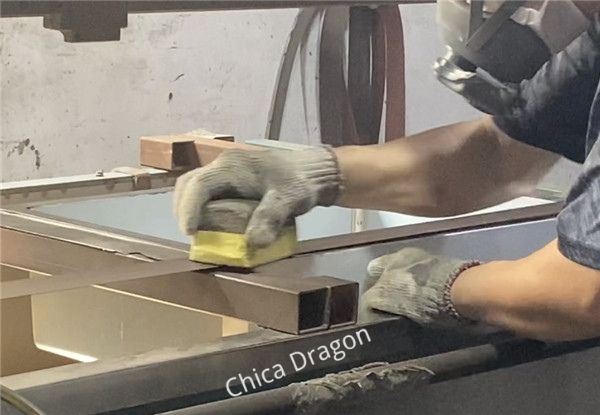
Sink Bottom
First, you polish the sink’s bottom and then move onto all the other different parts of the sink.
Sink Wall
Then you polish the sink wall. After that, if your design isn’t a double-bowl mold, you shine the sink’s joint part.
Using Abrasive Wheels
You should also use an abrasive wheel to polish the different lines that appear due to the brushes.
Upper Plate
After that, you must polish the upper plate of the sink. You do this to eliminate the weld lines and the surface flaws visible on the surface of the sink.
Punching The Holes
Then comes the punching of the faucet holes. You are to excavate the tap hole according to the position requirements of your sink order. You can perform this step at any point while manufacturing the sink.
Branding The Sink
Following that, you are to brand the sink by stamping a logo on it. You can do the stamping either by the laser method or by the stencil method.
Personally, I would say that the laser method is better since it is fully automated, so there is a low chance of error.
Also, there are plenty of low-cost laser markings available. The laser passes straight through the light-transmissive part of the film. This burns the logo right onto the stainless steel.
Repairing The Sink
Keep in mind that sometimes small repairs are necessary to the sink. This is from the minor damages that the sink withstands in the manufacturing process.
The manufacturer sends the sink to a repair site to increase its appearance and value.
Spray Paint Treatment
The final step before packaging is spray paint treatment. The spraying has numerous advantages. It makes the sink gain some weight. On top of that, it also covers the marks caused by the annealing process. Also, it prevents condensation on the sink surface in the kitchen.
However, the current sprays that manufacturers use do not have an anti-condensation function.
Pickling
Another alternative to spraying is pickling. Pickling can also remove the burn spots on the sheet due to annealing.
The Cleaning Process
Then comes the cleaning process. The worker removes the stretch oil from the stainless steel sheet. The debris and dirt from the different manufacturing processes are also removed.
The sink is then ready for packaging and selling.
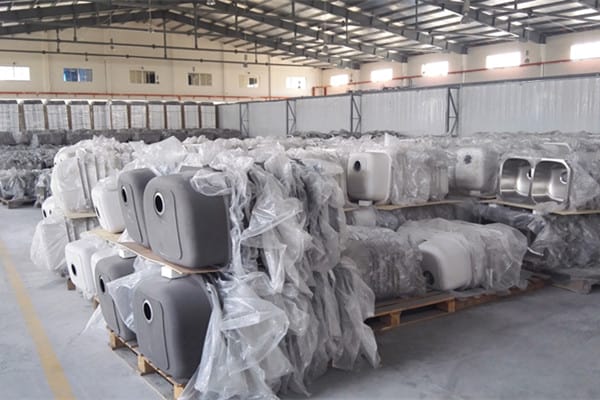
FILL IN THIS FORM TO REQUEST A QUICK QUOTE FROM CHICA DRAGON
SSS
Are There Different Types Of Stainless Steel Sinks?
Stainless steel sinks are available in ranges from 16 gauge to 22 gauge. The 16 gauge is thicker and is more resistant to dents. These sinks also insulate the sound of water splashing.
What Is The Easiest Sink To Clean?
Stainless steel sinks are very easy to keep spotless. The steel isgözeneksiz, which means that the stains and food debris cannot stick onto it. They are usually used in hospitals as well because they are very easy to sterilize.
How Long Do Stainless Steel Sinks Last?
Stainless steel sinks usually have a long lifespan. They can last from 15 to 25 years. But, other alternatives like porcelain and iron core sinks can last even longer. You can usually refinish them to last as long as your home.
Can You Get Scratches Out Of A Stainless Steel Sink?
You can use cleaners such as Revere Stainless Steel or Comet to remove the scratches. Polish is also available, which can conceal these scratches. This makes these sinks more attractive for the customers.
Nihayet
Paslanmaz çelik evyeler are very durable and easy to operate. However, keep in mind that these sinks are slowly going out of fashion.
There are better alternatives present which customers prefer over these.
Keep in mind the market you’re targeting and their needs.
İyi şanlar!









